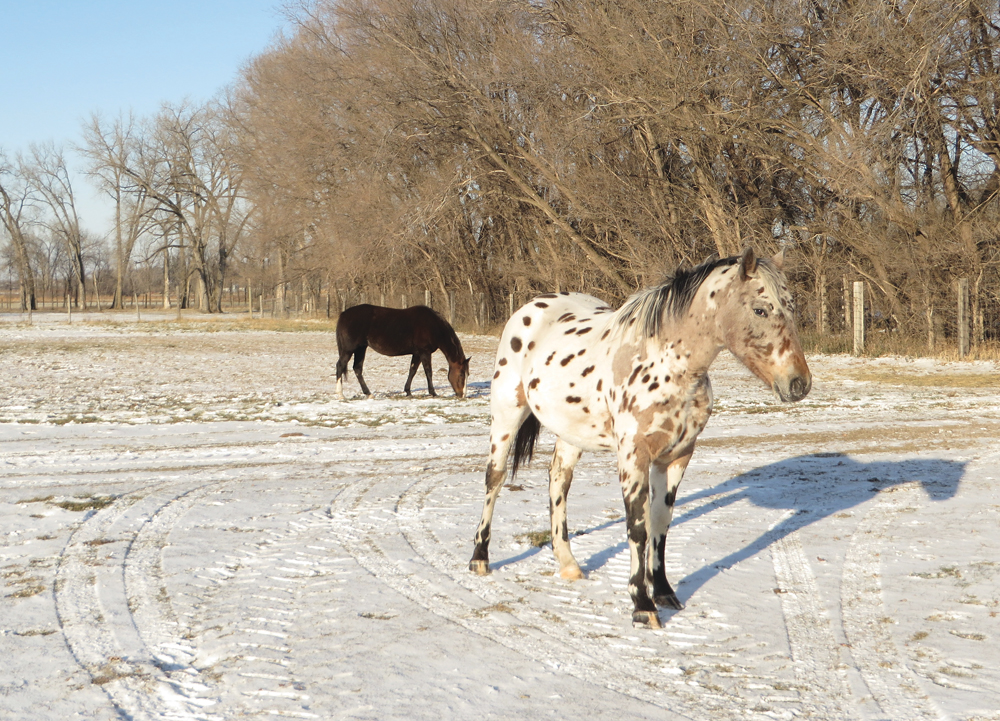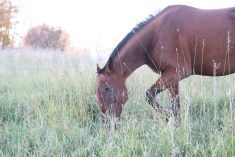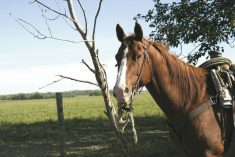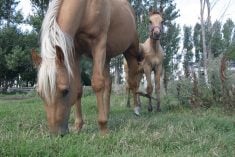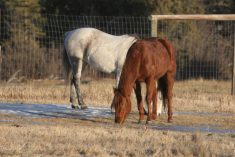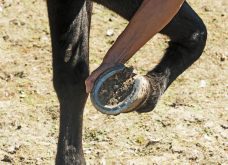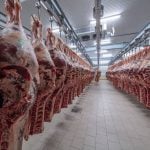If you think your horse is looking a little chubbier around this time of year, you might be right.
Managing seasonal weight gain in horses can be challenging. It involves a balance of diet, exercise, genetics and environment. The handler can control some of those things, but when it comes to the Earth’s rotation around the sun, it’s entirely out of human hands.
Fall has a natural impact on a horse’s metabolism. Hormonal changes set in motion by decreasing daylight trigger metabolic shifts, making horses more susceptible to rapid and relatively easy weight gain.
Read Also
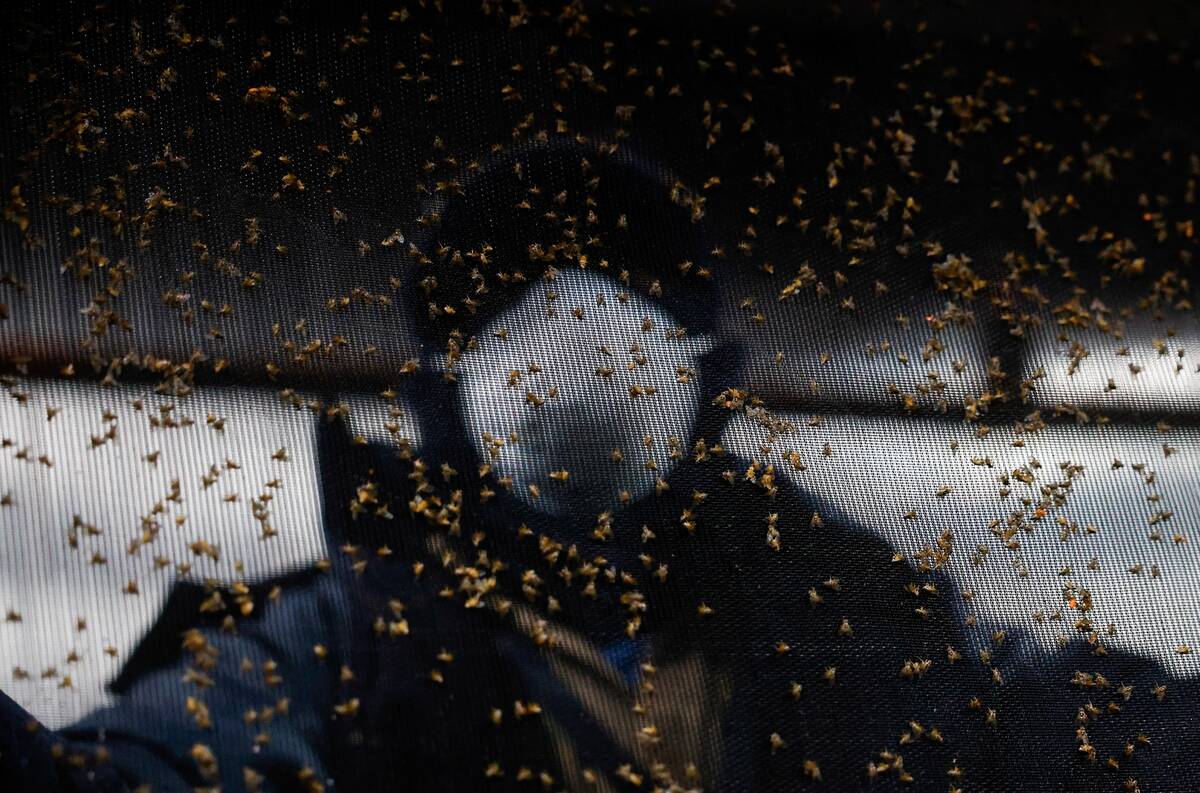
Canada too cold for New World screwworm
New World screwworm is closing in on the U.S. from Mexico, but the deadly livestock parasite isn’t likely to dig a surviving population in Canada, even if the fly species sneaks over the border.
As nights lengthen, melatonin production rises, triggering changes in coat growth and metabolic rate. Adrenocorticotropic hormone (ACTH) levels also increase, leading to a level of insulin resistance that promotes fat storage.
This is an adaptive mechanism. Horses, like many wild animals, prepare for winter by storing fat as a survival strategy for times when food will be scarce and conditions are harsh. For domestic horses that do not experience food scarcity, that coping strategy may now do more harm than good to an animal’s health.
The horse’s body starts storing fat in preparation for reduced forage availability as soon as the summer solstice passes in June. This gradual process accelerates between the fall equinox in late September and the winter solstice in late December.
All horses, regardless of health status, experience a natural rise in ACTH from mid-July to late November. Horses reach their peak fat reserves by the start of winter.
After the winter solstice, daylight hours gradually begin to increase, signalling another change in the horse’s metabolic state and prompting the body to start using fat stores for energy.
Horses also experience increased appetite in the fall, driven by fluctuations in hormones like leptin and ghrelin. Leptin, which signals satiety, becomes less effective, while ghrelin, the hunger hormone, increases. This shift encourages greater food intake, further complicating efforts to control weight.
The animals aren’t the only thing undergoing a biological change at this time of year. Chemical shifts in grasses increase levels of non-structural carbohydrates such as sugars and starches. Cooler temperatures inhibit plant growth, causing sugars to accumulate in the plant. As a result, horses grazing on fall pastures may consume more sugars than they do in summer, which increases the risk of weight gain and health issues.
Health impact
That extra weight may have helped their ancestors in winter, but in today’s horses, it can contribute to obesity, laminitis and metabolic disorders like equine metabolic syndrome if the owner isn’t deliberate about managing it.
Handlers may want to look at their grazing plans and limit pasture access until grass stems are no longer green. If grazing is necessary, allow horses to graze when sugar levels are lowest — early in the morning (until 10 a.m.) or a few hours after sunset.
However — and this is especially important for susceptible horses — when morning temperatures drop below 5 C during sunny fall weather, grasses can accumulate tremendous sugar levels up to 30 per cent. To avoid triggering episodes of laminitis or founder, it is necessary to restrict grazing during these early hours under those conditions.
For horses that are sensitive to sugars, switching to lower-calorie forages such as mature grass hays can help manage calorie intake. A forage analysis can guide feeding decisions. Aim to keep non-structural carbohydrate levels below 10 per cent.
Using slow feeders can help ensure a steady intake. In addition, reducing or eliminating high-calorie treats and supplements can further support weight management.
Monitoring body condition during this time helps track the horse’s weight, prevent gradual weight “creep”and can guide adjustments to feeding routines based on changes in forage quality and availability. Aim for a moderate body condition score between five and six to maintain a healthy weight.
Calculating and measuring hay forage intake at one to two per cent of the horse’s body weight can be beneficial, with adjustments made according to the horse’s body condition score.
Exercise plays a key role in managing weight, especially as horses tend to move less with shorter days. Encouraging regular movement and incorporating exercise as weather permits can improve insulin sensitivity and help maintain healthy glucose levels.
Owners should resist the urge to blanket their horses without a valid reason, allowing the winter coat and fat reserves to function as nature intended. Fat reserves provide both warmth and energy, while blanketing can disrupt the body’s ability to efficiently utilize both, leading to buildup of stagnant fat.
Horse bodies are designed to mobilize these reserves throughout the winter. Relying on this natural process helps maintain a healthy body condition. In fact, it is both healthy and perhaps essential for horses to shed some weight during the cold season, as it aligns with their natural physiological rhythm.
By understanding these seasonal biological changes, owners can adjust their management practices to harmonize with the horse’s natural rhythms, promoting better long-term health outcomes.


